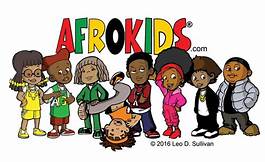The secret to an authentic taste and mouth-feel is fat, so what’s the best substitute for dairy? Our resident perfectionist tries them all …
Plant-based ice-cream, like so much else in the vegan world, has come on leaps and bounds in both range and quality in recent years as the market for it has grown, but many commercial varieties still replace dairy and eggs with a long list of perfectly harmless, yet still less than enticing ingredients such as fully refined soybean oil. Without stabilisers, the homemade kind may not last quite as well in the freezer but, frankly, it doesn’t need to: it’s unlikely to be in there long.
This recipe makes a virtue of coconut’s flavour, as well as of its natural creaminess, though you could also use it as a base for other ingredients, folding in fruit puree or chocolate chips after churning, say, or adding the likes of cocoa powder or peppermint extract to the base itself. Richer than a sorbet, lighter and cleaner than standard ice-cream, it’s really not just for vegans.
The “dairy”

Hannah Kaminsky’s version uses cornflour, which turns out a bit chewy. All thumbnail photographs: Felicity Cloake.
Or, rather, the non-dairy dairy – all the recipes I try are plant-based, though Morfudd Richards, former ice-cream van lady, current proprietor of Greenberry Cafe in Primrose Hill in north London, and author of Lola’s Ice Creams and Sundaes. She supplies a sorbet with sugar syrup rather than dairy as its base. If you’re looking for a really light thirst-quencher, this is the way to go, but I’m aiming for something richer and creamier here.
Marie Laforet’s Vegan Bible combines coconut milk with soy milk and cream, Hannah Kaminsky simply specifies non-dairy milk, for which I use the refrigerated coconut milk sold with the cow variety, while Max Falkowitz takes equal parts coconut milk and cream. As he writes on Serious Eats, “Most vegan ice-cream isn’t very good for a few reasons. Any putz can cook dairy and eggs together and make something reasonably good. But vegan ice-cream takes more technique and ingredient knowledge … The result? Ice-cream that’s watery, thin, and often flavourless. No thanks.” Devastating.
In short, standard ice-cream is made with delicious, fat-rich ingredients such as cream and egg yolks. Tinned coconut milk is only 11% fat, and the bottled stuff a tenth of that, so on its own, it’s never going to give the rich mouthfeel of the things it’s replacing. One solution is, as Kaminsky suggests, to thicken the mixture with cornflour, which gives it a plump, slightly chewy consistency that proves a hit with my testers, but I find it’s more like frozen blancmange than custard (unsurprisingly, once you learn from her book Vegan Desserts that “this recipe was actually the result of a happy accident. Originally intended to become a pie filling, I hadn’t actually taken into account how much the piecrust would hold and was upset at first to discover that it wouldn’t all fit. Not one to toss perfectly good food, I decided to make a few more small tweaks to the remainder and then churn it into ice-cream.”).
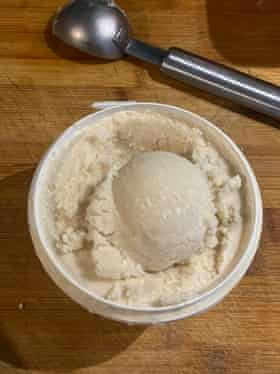
Marie Laforet’s take on the theme has coconut flakes through it.
If you want a more traditional texture, then, you’ll need more fat (look, I said this recipe was vegan; I didn’t say it was healthy). Falkowitz’s version is good, but even better is the one I happen upon by a Medium user, a vegan permaculturalist by the name of Violet Bee, who, after moving to a very rural farm, found herself frustrated by other people’s plant-based coconut ice-cream recipes, which, she says, always turned out either lumpy or grainy. After much experimentation, she discovered coconut milk powder, “which (very unscientifically) appears to bind the milk together and prevent the fat from separating during chilling”.
The powder I find in the Caribbean section of my local grocers is 60% fat, as opposed to the 20% in the carton of coconut cream I use for Falkowitz’s ice-cream. Unsurprisingly, this means Bee’s is smoother and richer, which may also be something to do with the fact that milk powder is hydroscopic, which means it soaks up water, leaving less to turn to ice during the freezing process. (Note that you don’t need much and, unlike coconut cream, it keeps for months once opened. Indeed, to reduce the environmental footprint of this recipe, make up the coconut milk from powder, too, according to the directions on the pack.)
The sugar

Falkowitz uses corn syrup, which, he says, ‘adds additional plush body to the base’. But where do you get it?
Ice-cream needs sugar for texture as well as for flavour – you can use solid stuff, but an invert syrup is preferable (that is, one in which sucrose has been broken down into its two component sugars, glucose and fructose, leaving it unable to form crystals), because this will give your ice-cream a softer, creamier consistency. Falkowitz uses corn syrup, which, he says, “adds additional plush body to the base”. It isn’t commonly found on shelves in this country, although you can buy it online (note that this is not the same as the high-fructose corn syrup, which rings alarm bells for dieticians). Bee and Laforet go for agave nectar, Richards adds a spoonful of glucose syrup (both are generally stocked in larger shops) and Kaminsky sticks with granulated sugar.
Some sort of inverse syrup feels like a good idea, texture-wise, but agave, glucose and corn syrup all lack character, so I’m going to use golden syrup instead, in combination with ordinary white sugar.
The extras

Violet Bee uses coconut milk powder to thicken, which is a revelation.
A little alcohol, either in the form of booze or vanilla extract, which tends to be alcohol-based, is common in many iced desserts – Falkovitz embraces both. As David Lebovitz explains in his book The Perfect Scoop, alcohol “prevents ice-creams and sorbets from freezing too hard (alcohol doesn’t freeze) and … provides flavour”. You can leave it out, if you like, but it makes the finished product easier to scoop, as well as giving it more complexity; for me, coconut demands rum, but feel free to use any spirit you have hanging around.
Kaminsky stirs in lime zest and juice, which prove very popular with my testers, and Richards infuses her base with makrut lime leaves, which lend it a subtle, south-east Asian note, but almost anything you can think of that goes with coconut is a possibility. I’d steer clear of solid pieces of coconut itself, though – Kaminsky and Laforet add it in flaked and desiccated forms respectively, and they’re both very chewy once frozen. Inspired by Muff Dining’s Martha de Lacey, I’ve infused the milk with toasted coconut instead, but you can skip this step if you’re using it as a base for other flavours.
The process

Morfudd Richards infuses her base with makrut lime leaves.
Pastry chef Dana Cree explains to Serious Eats that “coconut fat isn’t homogenised like butterfat in dairy. Sometimes it coalesces in the machine and feels grainy”. To prevent this, ensure you disperse any solid clumps of fat in your mixture before freezing; Bee reckons “the key to extra creaminess … is to blend [the mixture] like you’re trying to whip it into a foam”, while Falkovitz believes that “simmering and puréeing the ice-cream base emulsifies coconut fats that could otherwise separate and turn grainy while churning”. I’m going to take a belt-and-braces approach and both heat and blend the mixture, just in case.
I haven’t tried this recipe without an ice-cream maker; you can have a go using the still freezing method, but I suspect the results will be rather crunchy. It will be at its best in the first few days after making, but I can confirm it doesn’t get much better than straight from the machine.
*put the cooled mixture in a wide container, freeze for 60 minutes, then whizz it up with electric beaters or a fork and refreeze. Repeat twice at intervals of 60-90 minutes, then freeze for another hour, until fairly firm
Perfect vegan coconut ice-cream
Prep 5 min
Infuse 2 hr+
Chill 2 hr + freezing time
Makes 775g
50g coconut flakes
2 x 400ml tins coconut milk
2 tbsp coconut milk powder
30g golden syrup
90g white sugar
Salt, to taste
1-2 tsp vanilla extract
1 tbsp rum
Toast the coconut flakes in a dry frying pan until golden, stirring and shaking them regularly so they don’t burn. Tip into a bowl, add the coconut milk and leave to infuse for a few hours.
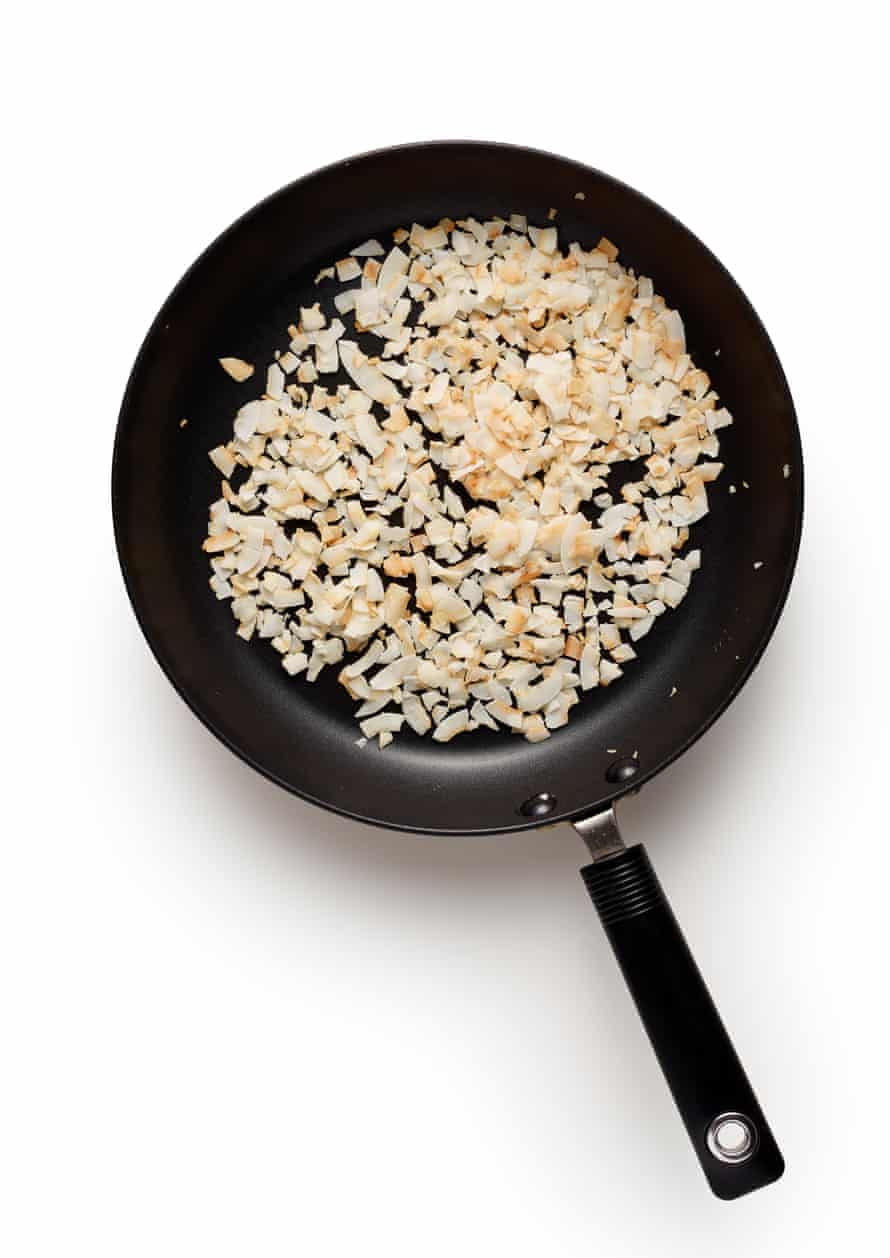
Put the milk powder in a medium saucepan, then strain the coconut milk into the pan, stirring as you go; discard the flakes.
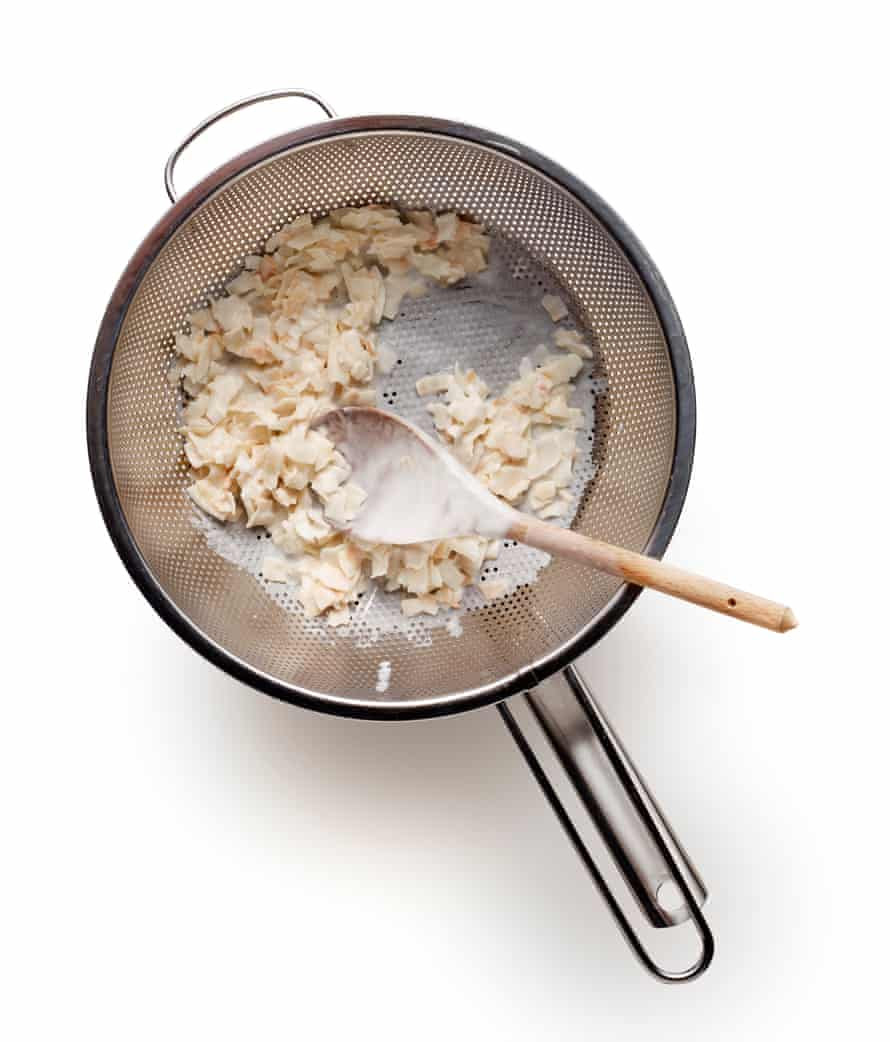
Add the syrup, sugar and a good pinch of salt to the pan and heat to just below a simmer.
Whizz the mix with an immersion or jug blender for two minutes, then stir in the vanilla and rum, and leave to cool. Chill for several hours until good and cold.
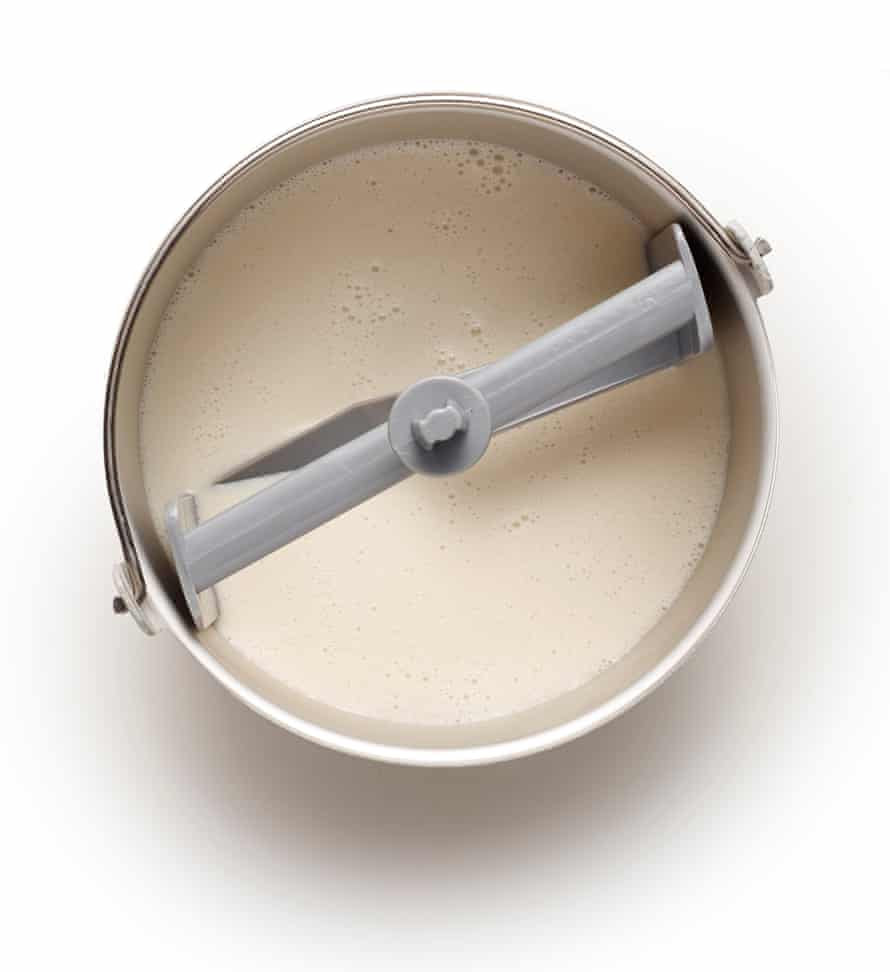
Whizz again for 30 seconds, churn in an ice-cream maker, then serve or put in the freezer to firm up further.

- UK readers: click to buy these ingredients from Ocado
Is coconut the key to great vegan ice-cream – if so, how do you make yours? And if not, what is the secret?
The secret to an authentic taste and mouth-feel is fat, so what’s the best substitute for dairy? Our resident perfectionist tries them all …
Plant-based ice-cream, like so much else in the vegan world, has come on leaps and bounds in both range and quality in recent years as the market for it has grown, but many commercial varieties still replace dairy and eggs with a long list of perfectly harmless, yet still less than enticing ingredients such as fully refined soybean oil. Without stabilisers, the homemade kind may not last quite as well in the freezer but, frankly, it doesn’t need to: it’s unlikely to be in there long.
This recipe makes a virtue of coconut’s flavour, as well as of its natural creaminess, though you could also use it as a base for other ingredients, folding in fruit puree or chocolate chips after churning, say, or adding the likes of cocoa powder or peppermint extract to the base itself. Richer than a sorbet, lighter and cleaner than standard ice-cream, it’s really not just for vegans.
The “dairy”

Hannah Kaminsky’s version uses cornflour, which turns out a bit chewy. All thumbnail photographs: Felicity Cloake.
Or, rather, the non-dairy dairy – all the recipes I try are plant-based, though Morfudd Richards, former ice-cream van lady, current proprietor of Greenberry Cafe in Primrose Hill in north London, and author of Lola’s Ice Creams and Sundaes. She supplies a sorbet with sugar syrup rather than dairy as its base. If you’re looking for a really light thirst-quencher, this is the way to go, but I’m aiming for something richer and creamier here.
Marie Laforet’s Vegan Bible combines coconut milk with soy milk and cream, Hannah Kaminsky simply specifies non-dairy milk, for which I use the refrigerated coconut milk sold with the cow variety, while Max Falkowitz takes equal parts coconut milk and cream. As he writes on Serious Eats, “Most vegan ice-cream isn’t very good for a few reasons. Any putz can cook dairy and eggs together and make something reasonably good. But vegan ice-cream takes more technique and ingredient knowledge … The result? Ice-cream that’s watery, thin, and often flavourless. No thanks.” Devastating.
In short, standard ice-cream is made with delicious, fat-rich ingredients such as cream and egg yolks. Tinned coconut milk is only 11% fat, and the bottled stuff a tenth of that, so on its own, it’s never going to give the rich mouthfeel of the things it’s replacing. One solution is, as Kaminsky suggests, to thicken the mixture with cornflour, which gives it a plump, slightly chewy consistency that proves a hit with my testers, but I find it’s more like frozen blancmange than custard (unsurprisingly, once you learn from her book Vegan Desserts that “this recipe was actually the result of a happy accident. Originally intended to become a pie filling, I hadn’t actually taken into account how much the piecrust would hold and was upset at first to discover that it wouldn’t all fit. Not one to toss perfectly good food, I decided to make a few more small tweaks to the remainder and then churn it into ice-cream.”).

Marie Laforet’s take on the theme has coconut flakes through it.
If you want a more traditional texture, then, you’ll need more fat (look, I said this recipe was vegan; I didn’t say it was healthy). Falkowitz’s version is good, but even better is the one I happen upon by a Medium user, a vegan permaculturalist by the name of Violet Bee, who, after moving to a very rural farm, found herself frustrated by other people’s plant-based coconut ice-cream recipes, which, she says, always turned out either lumpy or grainy. After much experimentation, she discovered coconut milk powder, “which (very unscientifically) appears to bind the milk together and prevent the fat from separating during chilling”.
The powder I find in the Caribbean section of my local grocers is 60% fat, as opposed to the 20% in the carton of coconut cream I use for Falkowitz’s ice-cream. Unsurprisingly, this means Bee’s is smoother and richer, which may also be something to do with the fact that milk powder is hydroscopic, which means it soaks up water, leaving less to turn to ice during the freezing process. (Note that you don’t need much and, unlike coconut cream, it keeps for months once opened. Indeed, to reduce the environmental footprint of this recipe, make up the coconut milk from powder, too, according to the directions on the pack.)
The sugar

Falkowitz uses corn syrup, which, he says, ‘adds additional plush body to the base’. But where do you get it?
Ice-cream needs sugar for texture as well as for flavour – you can use solid stuff, but an invert syrup is preferable (that is, one in which sucrose has been broken down into its two component sugars, glucose and fructose, leaving it unable to form crystals), because this will give your ice-cream a softer, creamier consistency. Falkowitz uses corn syrup, which, he says, “adds additional plush body to the base”. It isn’t commonly found on shelves in this country, although you can buy it online (note that this is not the same as the high-fructose corn syrup, which rings alarm bells for dieticians). Bee and Laforet go for agave nectar, Richards adds a spoonful of glucose syrup (both are generally stocked in larger shops) and Kaminsky sticks with granulated sugar.
Some sort of inverse syrup feels like a good idea, texture-wise, but agave, glucose and corn syrup all lack character, so I’m going to use golden syrup instead, in combination with ordinary white sugar.
The extras

Violet Bee uses coconut milk powder to thicken, which is a revelation.
A little alcohol, either in the form of booze or vanilla extract, which tends to be alcohol-based, is common in many iced desserts – Falkovitz embraces both. As David Lebovitz explains in his book The Perfect Scoop, alcohol “prevents ice-creams and sorbets from freezing too hard (alcohol doesn’t freeze) and … provides flavour”. You can leave it out, if you like, but it makes the finished product easier to scoop, as well as giving it more complexity; for me, coconut demands rum, but feel free to use any spirit you have hanging around.
Kaminsky stirs in lime zest and juice, which prove very popular with my testers, and Richards infuses her base with makrut lime leaves, which lend it a subtle, south-east Asian note, but almost anything you can think of that goes with coconut is a possibility. I’d steer clear of solid pieces of coconut itself, though – Kaminsky and Laforet add it in flaked and desiccated forms respectively, and they’re both very chewy once frozen. Inspired by Muff Dining’s Martha de Lacey, I’ve infused the milk with toasted coconut instead, but you can skip this step if you’re using it as a base for other flavours.
The process

Morfudd Richards infuses her base with makrut lime leaves.
Pastry chef Dana Cree explains to Serious Eats that “coconut fat isn’t homogenised like butterfat in dairy. Sometimes it coalesces in the machine and feels grainy”. To prevent this, ensure you disperse any solid clumps of fat in your mixture before freezing; Bee reckons “the key to extra creaminess … is to blend [the mixture] like you’re trying to whip it into a foam”, while Falkovitz believes that “simmering and puréeing the ice-cream base emulsifies coconut fats that could otherwise separate and turn grainy while churning”. I’m going to take a belt-and-braces approach and both heat and blend the mixture, just in case.
I haven’t tried this recipe without an ice-cream maker; you can have a go using the still freezing method, but I suspect the results will be rather crunchy. It will be at its best in the first few days after making, but I can confirm it doesn’t get much better than straight from the machine.
*put the cooled mixture in a wide container, freeze for 60 minutes, then whizz it up with electric beaters or a fork and refreeze. Repeat twice at intervals of 60-90 minutes, then freeze for another hour, until fairly firm
Perfect vegan coconut ice-cream
Prep 5 min
Infuse 2 hr+
Chill 2 hr + freezing time
Makes 775g
50g coconut flakes
2 x 400ml tins coconut milk
2 tbsp coconut milk powder
30g golden syrup
90g white sugar
Salt, to taste
1-2 tsp vanilla extract
1 tbsp rum
Toast the coconut flakes in a dry frying pan until golden, stirring and shaking them regularly so they don’t burn. Tip into a bowl, add the coconut milk and leave to infuse for a few hours.

Put the milk powder in a medium saucepan, then strain the coconut milk into the pan, stirring as you go; discard the flakes.

Add the syrup, sugar and a good pinch of salt to the pan and heat to just below a simmer.
Whizz the mix with an immersion or jug blender for two minutes, then stir in the vanilla and rum, and leave to cool. Chill for several hours until good and cold.

Whizz again for 30 seconds, churn in an ice-cream maker, then serve or put in the freezer to firm up further.

- UK readers: click to buy these ingredients from Ocado
Is coconut the key to great vegan ice-cream – if so, how do you make yours? And if not, what is the secret?






